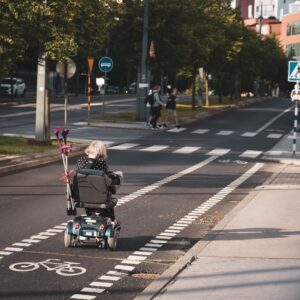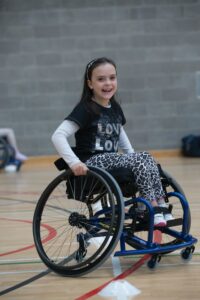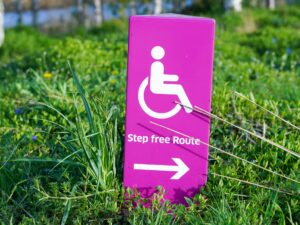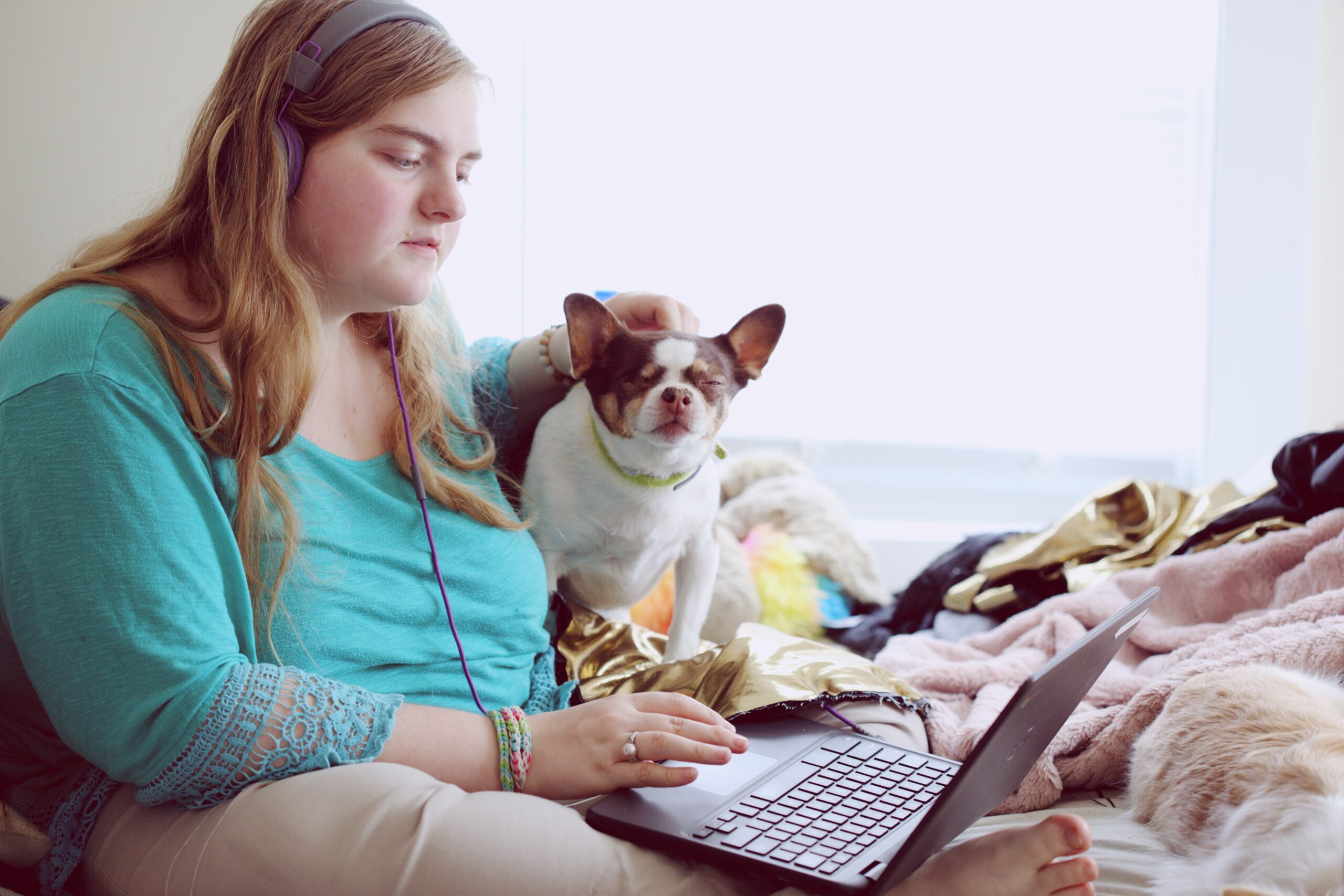When the COVID-19 pandemic began, many people experienced extensive changes to their daily routines. Lockdowns led to people spending more time in their homes as workplaces and schools made the switch from physical location to remote access. Throughout it all, there has been a lot of talk about the future, post-COVID-19 world. What will our new normal look like? As part of our May and June 2021 #GetKind Safety theme, we would like to take some time to reflect on accessibility during the pandemic and beyond.
A Large Minority
Roughly 15 percent of the global population has some form of disability. This makes disabled people the world’s largest minority group. According to the World Health Organization, we can expect to see this number grow as a result of population growth, medical advances, and the aging process. COVID-19 “long haulers,” or those who experience long-term effects from the virus, are also likely to contribute to an increased percentage of the population being disabled.
Accessibility and Safety
 Many of the public safety steps taken during the COVID-19 pandemic are things that disabled people have been advocating for for decades. These accommodations benefit both disabled and non-disabled people by promoting the health and safety of everyone. One of the more obvious examples of this is the increase in remote working, schooling, and healthcare opportunities that became available during the pandemic. Wider aisles, sidewalks, and a focus on having more space in public areas not only encourage social distancing but also make these areas more accessible to people using mobility aids. Similarly, automatic doors both increase accessibility and decrease the spread of germs through “touchpoints” on manual doors. Contactless delivery options that allowed people to support local businesses during lockdowns are another accessibility win. Being able to order delivery allows people who are housebound due to disability, illness, or a lack of transportation to access a wider variety of goods and services. Contactless delivery, in particular, offers a safer option for those who are immunocompromised or immunosuppressed.
Many of the public safety steps taken during the COVID-19 pandemic are things that disabled people have been advocating for for decades. These accommodations benefit both disabled and non-disabled people by promoting the health and safety of everyone. One of the more obvious examples of this is the increase in remote working, schooling, and healthcare opportunities that became available during the pandemic. Wider aisles, sidewalks, and a focus on having more space in public areas not only encourage social distancing but also make these areas more accessible to people using mobility aids. Similarly, automatic doors both increase accessibility and decrease the spread of germs through “touchpoints” on manual doors. Contactless delivery options that allowed people to support local businesses during lockdowns are another accessibility win. Being able to order delivery allows people who are housebound due to disability, illness, or a lack of transportation to access a wider variety of goods and services. Contactless delivery, in particular, offers a safer option for those who are immunocompromised or immunosuppressed.
The idea that designing environments to be accessible benefits everyone, not just disabled people, is a foundational component of universal design. Universal design argues that a good design is one that meets everyone’s needs. The goal is for all individuals to be able to easily access the same information, participate in the same experiences, and consume the same products and services.
Looking Forward
 Although pandemic safety steps have shown the potential for a more accessible post-COVID world, many disabled people fear that this progress may come to a halt when things begin to “go back to normal.” Once more people return to in-person work and schooling, will requests for remote accommodations be denied? Will the number of virtual events dwindle?
Although pandemic safety steps have shown the potential for a more accessible post-COVID world, many disabled people fear that this progress may come to a halt when things begin to “go back to normal.” Once more people return to in-person work and schooling, will requests for remote accommodations be denied? Will the number of virtual events dwindle?
In an interview with the BBC, Mik Scarlet, an actor, journalist, and accessibility expert, expressed his hope for a more inclusive post-pandemic world: “Hopefully this pandemic has shown people that you can be trapped at home, by no fault of your own, and you can still contribute. In the same way that we’re trying to plan our end of lockdown, can we also plan for the end of society being inaccessible?”
The United Nations has a similar goal for the future. Their theme for 2020’s International Day of Persons with Disabilities was “Building Back Better: toward a disability-inclusive, accessible and sustainable post-COVID-19 World.”
Building Back Better Together
 Accessibility and inclusivity make the world a safer place for all of us. Furthermore, accessibility matters all of the time, not just during global crises. Here are a few steps you can take to advocate for a more accessible world:
Accessibility and inclusivity make the world a safer place for all of us. Furthermore, accessibility matters all of the time, not just during global crises. Here are a few steps you can take to advocate for a more accessible world:
- Check out the United Nations’ content from International Day of Persons with Disabilities.
- Take the time to learn more about some common dos and don’ts of accessibility, universal design, and how universal design contributes to accessibility.
- Reach out to local businesses and encourage them to continue with new, accessible practices they may have started during the pandemic, such as contactless delivery.
- Stay up-to-date on laws that may protect or harm disability rights. Contact government officials to let them know that disability rights and accessibility are important to you.
- Listen to and amplify disabled voices. Disabled people continue to be underrepresented and talked over when it comes to decisions on accessibility. Be sure to follow their lead; listening and supporting are key to all advocacy.
You can find more ideas on how to #GetKind and support those in the disabled community by reading our article on erasing the stigma of disability. An accessible, inclusive world is a better world for us all. Together, we can make progress towards that goal.
Have an idea to make your community more accessible? Random Acts may be able to help. You can reach out to your Regional Representative or learn more about applying for a sponsored act of kindness here.

